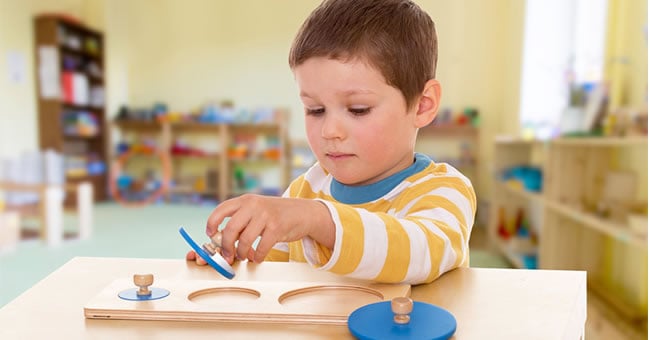
Maria Montessori revolutionized child care and early education with her ideas on how to best help children learn and grow. She developed her approach to early childhood education in the early 20th century, and since that time, the Montessori approach has continued to grow in popularity around the world. If you're considering the Montessori approach for your center or classroom or want to find out more information about what it entails, here are four things you need to know:
- The materials used in Montessori are beautiful and realistic. One of the goals in a Montessori learning environment is to give children real experiences with real tools and materials. For example, a kitchen set with a stainless steel look would be a better fit for a Montessori dramatic play center than a plastic kitchen set would.
- Activities and lessons are child directed with the teacher serving as a facilitator. In a Montessori learning environment, teachers are often not called teachers. This is because they're there to serve as facilitators. Maria Montessori understood the importance of giving children opportunities to be independent, which is why she was the first person to suggest that child-sized furniture be used in classrooms to help children develop self-reliance.
- Older children often work with younger children in Montessori learning environments. Age grouping is one of the more unique components of the Montessori approach. Older children help the younger children learn, which gives older children the opportunity to practice their leadership skills. Age grouping also gives younger children someone to look up to and learn from while providing both age groups with opportunities to develop their social and emotional skills.
- Montessori focuses on giving children large blocks of time to complete activities and problem solve instead of following a tight schedule. The daily schedule is a point of focus in many classrooms and learning environments. Children may be in the middle of creating art or making a block structure, but they don't get to finish it before they have to move on to the next activity on the schedule. This can cause children to become frustrated. The Montessori approach gives children large blocks of time to create and learn with few interruptions and distractions.
The Montessori approach encourages social interaction, self-confidence, and independence. There are a variety of benefits to using the Montessori approach, but whether or not it's the right approach for you will depend on your specific situation and needs. Be sure to browse our other Insights and Inspirations articles and our selection of resource books for tips and information on numerous topics.
